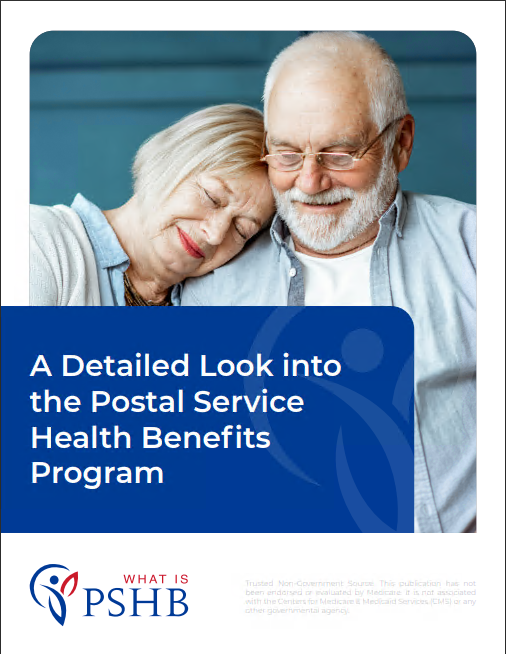Key Takeaways
- The Postal Service Health Benefits (PSHB) program, beginning in 2025, marks a significant shift for USPS employees and retirees, streamlining access to comprehensive health insurance.
- Understanding the new PSHB program is crucial for current USPS employees, retirees, and their dependents, as it will replace the Federal Employees Health Benefits (FEHB) program for postal workers.
Looking Ahead: What the Future Holds for USPS Health Benefits with the New PSHB Program
In 2025, the United States Postal Service (USPS) will undergo a significant transformation in how its employees and retirees access health insurance. The Postal Service Health Benefits (PSHB) program, established under the Postal Service Reform Act of 2022, is set to replace the existing Federal Employees Health Benefits (FEHB) program for postal workers. This shift represents one of the most substantial changes to USPS employee benefits in recent history, and it carries significant implications for both current and retired postal employees.
As the PSHB program approaches its official implementation, it’s essential to understand what this change entails, how it will impact USPS employees, and what steps can be taken to prepare for the transition. This article explores the key aspects of the PSHB program, the timeline for its rollout, and the potential benefits and challenges associated with this new era of postal employee health benefits.
Understanding the PSHB Program
The Postal Service Health Benefits (PSHB) program was created to address the unique needs of USPS employees and retirees, offering a tailored approach to health insurance that reflects the specific demands of the postal workforce. The PSHB program will operate separately from the broader FEHB program, which has historically provided health benefits to federal employees, including USPS workers.
One of the primary reasons for the introduction of the PSHB program is to alleviate the financial pressures on the USPS by addressing the prefunding of retiree health benefits. Under the new system, USPS will have more control over the administration of health benefits, potentially leading to more efficient management and cost savings. However, this shift also raises questions about how coverage will differ from the FEHB program and what changes employees and retirees can expect.
Key Dates and Milestones
The transition to the PSHB program will not happen overnight. It will be a phased process, with several key dates and milestones to be aware of:
- April 6, 2022: The Postal Service Reform Act was signed into law, officially establishing the PSHB program.
- 2024: Enrollment for the PSHB program is expected to begin during the Federal Benefits Open Season in late 2024.
- January 1, 2025: The PSHB program will officially replace the FEHB program for USPS employees, retirees, and their dependents. This means that all postal employees and retirees who previously received health insurance through FEHB will need to transition to a PSHB plan.
These dates highlight the importance of staying informed and proactive during this transition period. Missing key enrollment deadlines or failing to understand the new coverage options could have significant consequences for USPS employees and retirees.
Differences Between PSHB and FEHB Programs
While the PSHB program is designed to provide similar coverage to what USPS employees and retirees currently receive under the FEHB program, there are several differences that are worth noting:
-
Separate Risk Pools: The PSHB program will operate with separate risk pools for USPS employees and retirees, distinct from the broader federal workforce. This change could impact premiums, coverage options, and the overall cost of health insurance for postal workers.
-
Medicare Integration: One of the significant changes under the PSHB program is the requirement for Medicare-eligible retirees to enroll in Medicare Part B. This integration is expected to reduce the overall cost burden on the PSHB program and ensure that retirees have comprehensive coverage. Retirees who do not enroll in Medicare Part B may face penalties or reduced benefits.
-
Potential Plan Changes: With the transition to the PSHB program, there may be changes in the specific health plans offered, including alterations to networks, covered services, and provider options. USPS employees and retirees will need to carefully review their new plan options to ensure they continue to receive the necessary care and services.
Preparing for the Transition to PSHB
As the 2025 rollout of the PSHB program approaches, USPS employees and retirees should take several steps to ensure a smooth transition:
-
Stay Informed: Regularly check for updates from USPS and the Office of Personnel Management (OPM) regarding the PSHB program. Being informed about changes, deadlines, and new options is crucial for making the best decisions regarding health coverage.
-
Review Current Coverage: Take the time to review your current health coverage under the FEHB program. Identify the services and providers that are most important to you and determine if they will still be available under the PSHB program.
-
Consider Medicare Enrollment: For retirees who will be Medicare-eligible by 2025, it’s important to understand the implications of Medicare Part B enrollment under the new PSHB program. Enrolling in Medicare Part B will likely be a requirement, so it’s wise to plan ahead and factor this into your retirement health care strategy.
-
Attend Information Sessions: USPS and OPM are expected to offer informational sessions and resources to help employees and retirees navigate the transition to the PSHB program. Attend these sessions and ask questions to ensure you fully understand the changes and how they will affect you.
-
Plan for Open Season: The 2024 Federal Benefits Open Season will be a critical time for USPS employees and retirees to make decisions about their health coverage under the PSHB program. Mark your calendar and be prepared to review your options and make necessary changes to your coverage.
Potential Benefits of the PSHB Program
While the transition to the PSHB program introduces changes and uncertainties, it also offers several potential benefits for USPS employees and retirees:
-
Tailored Coverage: The PSHB program is specifically designed to meet the needs of postal employees, offering a more focused approach to health coverage that aligns with the unique demands of their work.
-
Cost Savings: By integrating Medicare for eligible retirees and creating separate risk pools, the PSHB program aims to reduce the overall cost burden on the USPS, which could translate to more sustainable health benefits in the long term.
-
Simplified Administration: With the USPS taking a more direct role in administering health benefits through the PSHB program, there may be opportunities for streamlined processes and improved customer service for employees and retirees.
Challenges and Concerns
Despite the potential benefits, the transition to the PSHB program also presents challenges and concerns that USPS employees and retirees should be aware of:
-
Plan Disruption: The shift to the PSHB program could result in disruptions to existing health plans, including changes in coverage, provider networks, and out-of-pocket costs. Employees and retirees will need to navigate these changes carefully to avoid gaps in coverage.
-
Medicare Enrollment Requirements: The requirement for Medicare-eligible retirees to enroll in Medicare Part B may create financial strain for some retirees, particularly those who were not previously enrolled. Understanding these requirements and planning accordingly will be essential.
-
Communication and Education: Ensuring that all USPS employees and retirees fully understand the changes associated with the PSHB program will be a significant challenge. Clear communication and comprehensive educational resources will be crucial to a successful transition.
Moving Forward with Confidence
As the USPS prepares for the rollout of the PSHB program in 2025, employees and retirees should take proactive steps to ensure they are ready for the transition. By staying informed, reviewing current coverage, and planning for upcoming changes, USPS workers can navigate this significant shift with confidence.
The move to the PSHB program represents a new chapter in postal employee health benefits, offering both challenges and opportunities. With careful preparation and a clear understanding of what lies ahead, USPS employees and retirees can make the most of the new health benefits landscape.
Contact Information:
Email: [email protected]
Phone: 5139037551
Bio:
Jeff Spencer developed his passion in helping others with financial planning at a very young age
while enlisted in the Air Force, stationed in England working on aircraft as a crew chief. He
quickly stood out as an individual that had a passion for helping others; his squadron
commander asked him to accept an assignment as the squadron financial advisor. With
training, Jeff developed his skills as an advisor for military men and women in his squadron.
While in the Air Force he continued his education in business, enrolling in classes overseas with
professors from Cambridge University and Oxford University where he studied economics and
international banking. Separating from the Air Force, and a desire to help others, led him to a
small investment firm in Burbank Ca. As a licensed stock broker, working with individuals from
the Disney studios, Paramount pictures, and The Tonight Show to name a few along with
several small business owners executing financial investments built on long and short-term
investments provided experience in several levels of planning.
Time being a great educator, traveling to many places, and developing plans for hundreds of
clients has provided a lifetime of wisdom for Jeff. Working through so many economic cycles
and dedicated to continuing his thirst for knowledge has developed the confidence necessary to
provide the trust and experience needed to provide quality advice for individuals preparing for
retirement. His dedication to a lifetime of income and protection along with peace of mind and
many years of happiness is a commitment that he takes very seriously.
Over the years, Jeff has continued with his passion and recognizes how money can become a
powerful tool that should be used to deliver safety and protection in our lives. Financial
freedom can be defined in many ways (its powerful). Financial planning can help ease fear,
misfortunes, frustrations, and bring us peace of mind and happiness. All too often greed and
fear enter our lives and can leave us with unexpected pain. Age gives us years of life
experiences that develop wisdom, and always seeking knowledge may bring us to a point in life
where we begin to understand the difference between what we want in life and what we need
in life. Sometimes with proper planning we can have it all.
Jeff Spencer understands what a lifetime of dedication with the government looks
like, and letting go of the connection with that relationship can be difficult. When he left the
service, he had to find his way and knows what it was like making the changes. He developed
the IEA way (Introduction Education and Application)







